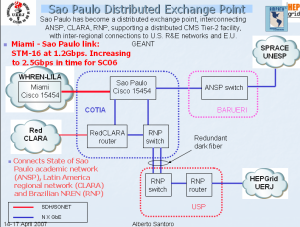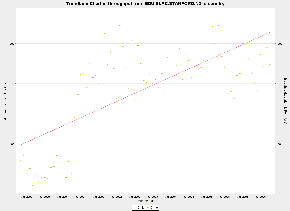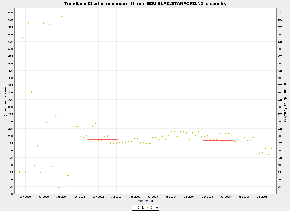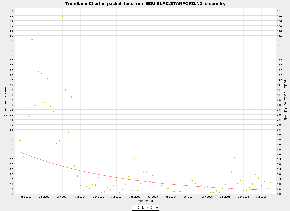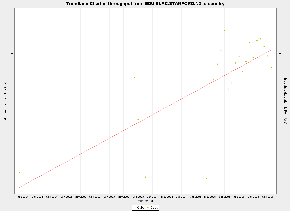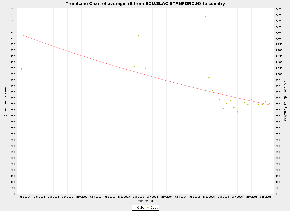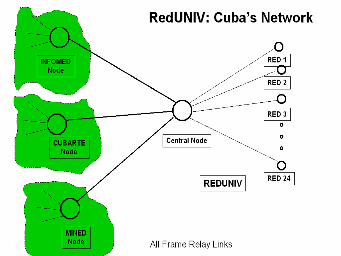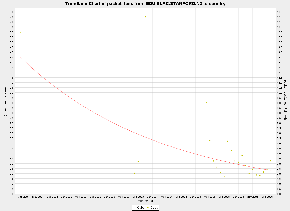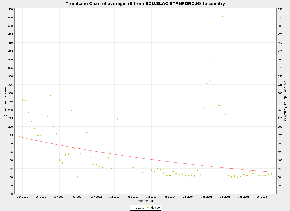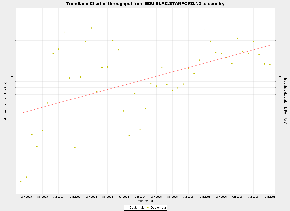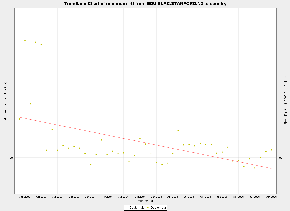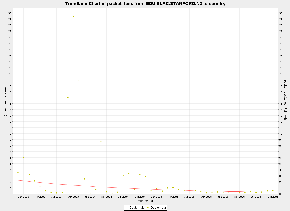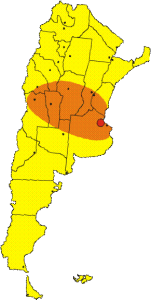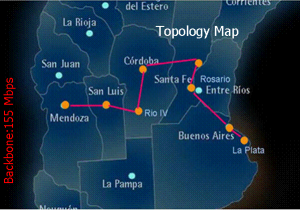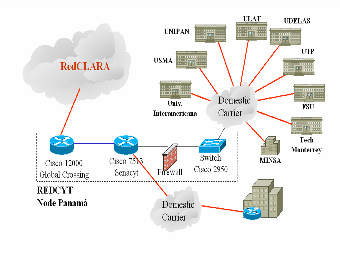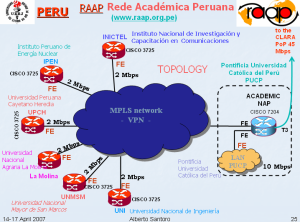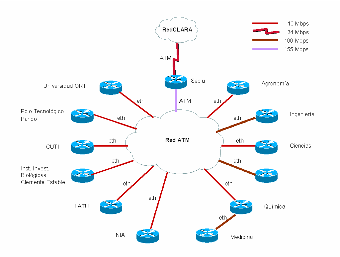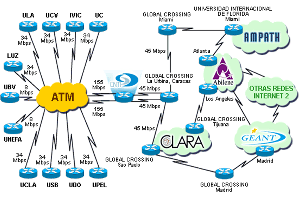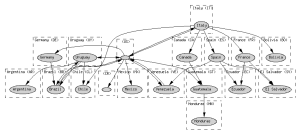...
The sites from which there is PingER monitoring are shown in red below, sites which are monitored by all monitoring hosts (these are referred to as beacon sites and also include monitor sites) are shown in blue, and other monitored remote sites are shown in green. From SLAC PingER monitors about 460 sites, CERN used to monitor about 132 sites, however after re-installing in December 2006) they now only monitor beacon sites (56). ICTP Trieste monitors 105 sites but only has data going back to September 2006. To the right of the PingER map we also show a map which defines how we are assigning countries to regions.
...
MOS for various regions
| Include Page | ||||
|---|---|---|---|---|
|
TCP throughput from CERN & SLAC to World Regions
| Include Page | ||||
|---|---|---|---|---|
|
ALICE and RedCLARA
Since its launch in September 2004, the ALICE projecthas been a key component in reducing disparities within Latin America by bridging the "Digital Latin America has benefited greatly by connection in 2001 to the AMPATH Internet Exchange Point in Miami that brought connectivity to North America, and the ALICE/RedCLARA project started in 2004 to connect Latin American NRENs to Europe. The launching of these projects has helped bridge the "Digital Divide" both within the region and with the rest of the world. The project has enabeled projects have enabled Latin American researchers to become key players in the global research community.
On September 1 of 2004, RedCLARAThe Alice/RedCLARA project seen above began to provide direct connectivity with 155 Mbps, in "a ring" topology, linking the NRENs of Argentina, Brazil, Chile, Panama and Mexico, and connecting them to GÉANT at 622 Mbps throughout a connection between São Paulo, Brazil, and Madrid, Spain. RedCLARA now connects 14 countries across Central and South America, allowing 738 universities and research institutes to communicate with their European and global peers directly.
The performance of Research and Educational Networks of Argentina, Brazil, Chile, Mexico, Guatemala and Uruguay has significantly improved due to ALICE project. the AMPATH and ALICE/RedCLARA projects . See the graphs below for the country details, which we now summarize:
- In December 2001, Argentina's (RETINA) connected to AMPATH, so the increase in performance to Argentina can be seen from US. Around June 2006 the TCP throughput of Argentina increased significantly. The average RTT reduced from 600 ms to 200 ms. The minimum RTT reduced from 250 ms to 200 ms. The packet loss has also decreased significantly.
- From January 2001 - July 2001 the loss from US to Brazil decreased from 8 % to 1 %. The Average RTT decreased from 375 ms to 200 ms. The TCP throughput improved but it has not stabilized (still lots of variations).
- In June 2001, Chile's REUNA becomes the first Latin American NREN (National Research and Educational Network) to get connected to the AMPATH POP in Miami. As a result the TCP throughput increased significantly. Minimum RTT reduced from 230 ms to 200 ms and average RTT reduced from 725 ms to 250ms. Packet loss reduced from 10 % to 1 %.
- In July 2003 Mexico's connectivity improved. Minimum RTT became stable from 100 ms to 60 ms and average RTT also became stable. Since Uruguay joined in June, 2005 its TCP throughput has improved. Average RTT reduced from about 325 ms to 225 ms. Minimum RTT reduced from about 270 ms to 220 ms The loss situation has not seen much improvement.
...
- In the beginning of 2006 Paraguay moved from satellite to fiber but Cuba is still connected through satellite. Average and min RTT of Cuba are greater than 800ms and the packet loss is around 2-4 % which is dreadful. RedClara is also planning for a connection to Cuba in the near future, so that it can also play role in global research initiatives.
...
Status of Latin American Countries
A very interesting presentation of the status of networking in Latin America can be found in "Closing the Digital Divide in Latin America" by Alberto Santoro or UERJ, Brazil. Below we show the measured performance of connections from N. America to Latin America.
...
Cuba
Poor performance due to satellite link. Average and min RTT are about 800ms. Packet loss is around 2-4 % in 2006
(The only hope for Cuba is to connect to RedClara) RedClara plans to connect to Cuba in the near future
Mexico
July 2003 performance improved . Minumum RTT became stable 100 ms to 60 ms and Average RTT also became stable.
but January 2005 to July 2005 again problem arose
Guatemala
Janruary 2005 packet loss becomes stabilizing >1% April 2003 minimum and average RTT improved
...
Connected to RedCLARA (90 Mpbs) 42 universities, 8 National Research Laboratories, 5 Government Agencies
Good Poor Very Poor
Bolivia
Not connected to RedCLARA, no topology map available.
...
One ministry, 2 non governmental institutions, 3 Universities , 3 Scientific-technological Institutes or Academies
45 Mbps 10 Mbps
Cuba
22 Universities and Research centers
...
7 Universities and 3 Governmental Institutions
Peru
Uruguay
31 Universities Institutions ans Schools
Venezuela
Routing
Traceroute from
...
Brazil to Latin American Countries
Routes from Brazil to other Latin American Countries
...
There are many "development" indices today:
- UNDP Human Development Index (2006, 177 countries)
- UNDP Technology Achievement Index (2001, 72 countries)
- ITU ITU Digital Access Index (2003) and the Digital Opportunity Index (2006), both 180 countries
- World Economic Forum's Network Readiness Index (2004, 2005, 2006-2007: 122 countries)
- Harvard University Network Readiness Index (2002, 75 countries)
...
In the scatter plots below of the derived throughputs vs. the "development" index, the US, Canada and Mexico are typically excluded since the distance from the measuring point (the US) RTT is small so the derived throughput from the Mathis formula will be artificially high. Hosts in well connected countries such as Finland, Sweden, Japan also have their losses poorly measureed since only 14,400 packets are sent to a host in a month, so measuring losses of < .01% is inaccurate.
Comparison of TCP Throughput with UNDP Human Development Index
Graph Goes here
The UNDP Human Development Index (HDI) is composed of 3 factors defining the development of a country. They are:
- A Long and healthy life, as measured by expectancy at birth.
- Knowledge, as measured by the adult literacy rate (with 2/3 weight) and the combined primary, secondary and tertiary gross enrolment ratios (with 1/3 weight).
- A decent standard of living, as measured by GDP per capita.
On the scatter plot the S. Asian countries are indicated by orange diamonds.
The figure above shows a scatter plot of the HDI versus the PingER Derived Throughput for July 2006. Each point is colored according to the country's region. A logarithmic fit is also shown. Logarithmic is probably appropriate since Internet performance is increasing exponentially in time and the differences between the countries can be related to number of years they are behind the developing countries, while human development is more linear. Since the PingER Derived TCP Throughput is linearly proportional to RTT, countries close to the U.S. (i.e. the U.S., Canada and Central America) may be expected to have elevated throughputs compared to their HDI. We thus do not plot or use these countries in the correlation fit between HDI and throughput. It is seen that there is a strong correlation (R2 > 0.6) between the HDI and throughput. As expected countries in Africa generally occupy the lower values in x and y, and European countries together with Australia, New Zealand, Korea and Japan occupy the higher values of x and y.
Comparison of TCP Throughput with Technology Access Index
In 2001 the United Nations Development Programme (UNDP) introduced the Technology Achievement Index(TAI) with 72 countries to reflect a country's capacity to participate in the technological innovations of the network age. The TAI aims to capture how well a country is creating and diffusing technology and building a human skill base. It includes the following dimensions: Creation of technology (e.g. patents, royalty receipts); diffusion of recent innovations (Internet hosts/capita, high & medium tech exports as share of all exports); Diffusion of old innovations (log phones/capita, log of electric consumption/capita); Human skills (mean years of schooling, gross enrollment in tertiary level in science, math & engineering). the Figure below shows December 2003's derived throughput measured from the U.S. vs. the TAI. The correlation is seen to be positive and medium to good.
Graph goes over heresent to a host in a month, so measuring losses of < .01% is inaccurate.
Comparison of TCP Throughput with Digital Access Index
...
A map of the NRI for the 122 countries of the 2006-2007 NRI are shown in the map below.
